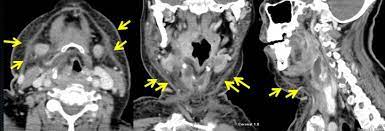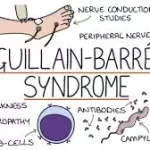
A study has indicated that patients with stable angina who possess high coronary artery calcium scores can be distinguished through an enhanced CT scan, thereby experiencing lower risks of adverse outcomes over a three-year period. The findings from this research were published in Radiology, a journal affiliated with the Radiological Society of North America (RSNA). Researchers from Denmark conducted a prospective study to assess the three-year clinical outcomes of patients who underwent CT angiography and fractional flow reserve (CT-FFR) derived from the CT angiography. The CT-FFR calculates the blood flow in the coronary arteries using images from coronary CT angiography, AI algorithms, and computational fluid dynamics.
Lead researcher Kristian T. Madsen, M.D., and Ph.D. candidate in the Department of Cardiology at the University Hospital of Southern Denmark in Esbjerg, explained, “CT angiography is the initial step in detecting coronary artery disease, but it doesn’t reveal its impact on blood flow within the arteries. Turbulent blood flow might lead to abnormal pressure in the vessel, which can deteriorate coronary plaques and make them susceptible to rupture.”
Prior to CT angiography, a non-contrast enhanced cardiac CT is typically performed to determine the amount of coronary artery calcium, serving as an indicator for total coronary plaque—a fatty buildup in the arteries that may lead to future heart issues. A coronary artery calcium score of 400 or higher indicates elevated plaque levels. Since calcium absorbs a significant amount of x-rays, evaluating coronary CT images of patients with high levels of coronary artery calcium can be particularly challenging.
The study group comprised patients with newly diagnosed stable coronary artery disease who were consecutively enrolled in the Assessing Diagnostic Value of Non-Invasive CT-FFR in Coronary Care (ADVANCE) clinical trial between December 2015 and October 2017 at three Danish sites. Eligibility criteria for the trial included having at least one coronary artery stenosis (narrowing) greater than 30% and no atrial fibrillation (irregular heartbeat) or prior coronary revascularization (a procedure or surgery that improves blood flow to the heart).
Out of the 900 participants, 523 exhibited normal CT-FFR results (mean age 64, 318 males), while 377 showed abnormal CT-FFR results (mean age 65, 264 males). In the group with normal results, the rate of adverse outcomes over three years (defined as all-cause deaths and non-fatal myocardial infarction) was 2.1% (11/523). In the group with abnormal results, the rate of adverse outcomes over three years was 6.6%.
For participants with normal CT-FFR results and a high coronary artery calcium score, the three-year adverse outcome rate was 2.2% (4/182). Conversely, participants with a high coronary artery calcium score and abnormal CT-FFR results exhibited a three-year adverse outcome rate of 9% (19/212).
Dr. Madsen remarked, “Our study provides evidence for the prognostic potential of CT-FFR in patients with high coronary artery calcium scores. Regardless of the patient’s baseline risk and extent of coronary artery disease measured by coronary artery calcium, if CT-FFR results are normal, the prognosis is good.”
Dr. Madsen further noted that different imaging options for assessing the impact of coronary artery disease on blood flow have distinct strengths and weaknesses. He emphasized that CT-FFR demonstrates high diagnostic accuracy and correlates well with invasively measured fractional flow reserve—an invasive procedure that directly measures blood flow within the coronary arteries.

“In my opinion, CT-FFR is the best option because it provides a blood-flow estimate similar to what you would obtain if you performed invasive heart catheterization,” he added. “You get a reliable and quick answer without performing additional tests or subjecting the patient to an invasive procedure.”
According to Dr. Madsen, CT-FFR enables clinicians to stratify the population of coronary artery disease patients by risk level, allowing for a more targeted approach to improving the prognosis of high-risk patients. He concluded, “CT-FFR provides diagnostic and prognostic information beyond what can be obtained from CT angiography alone across a wide range of coronary artery calcium levels. It’s a tool that offers a lot of exciting prospects for the future.”










